 W
WThe Mediterranean and Middle East Theatre was a major theatre of operations during the Second World War. The vast size of the Mediterranean and Middle East theatre saw interconnected naval, land, and air campaigns fought for control of the Mediterranean, North Africa, the Horn of Africa, the Middle East and Southern Europe. The fighting in this theatre lasted from 10 June 1940, when Italy entered the war on the side of Germany, until 2 May 1945 when all Axis forces in Italy surrendered. However, fighting would continue in Greece – where British troops had been dispatched to aid the Greek government – during the early stages of the Greek Civil War.
 W
WThe Seventh Army was a United States army created during World War II that evolved into the United States Army Europe (USAREUR) during the 1950s and 1960s. It served in North Africa and Italy in the Mediterranean Theater of Operations and France and Germany in the European theater between 1942 and 1945.
 W
WOperation Achse, originally called Operation Alaric, was the codename for the German operation supported by Italian fascists to forcibly disarm the Italian armed forces after Italy's armistice with the Allies on 3 September 1943. The Germans disarmed over a million Italian troops within a matter of days, annihilating the Italian military and state.
 W
WOperation Albumen was the name given to British Commando raids in June 1942 on German airfields in the Axis-occupied Greek island of Crete, to prevent them from being used in support of the Afrika Korps in the Western Desert Campaign in the Second World War. These operations were carried out in tandem with similar raids against Axis airfields at Benghazi, Derna and Barce in Libya and were among the first planned sabotage acts in occupied Europe.
 W
WAllied Force Headquarters (AFHQ) was the headquarters that controlled all Allied operational forces in the Mediterranean Theatre of World War II from late 1942 until the end of the war in Europe in May 1945.
 W
WFrom 1939 until January 1944, the intelligence services of Germany and Italy, with the assistance of the Spanish government, maintained a network of stations in the vicinity of the Strait of Gibraltar. The stations tracked the movements of Allied warships and merchant vessels and became a valuable source of intelligence to the Axis, for attacks on Allied convoys. The British Government considered attacking the stations on two occasions during 1942 but decided instead to use diplomatic pressure to have them closed. The stations are believed to have ceased operations in January 1944.
 W
WUnits in the Mediterranean Theater of Operations (MTO) were the second-largest user of the Boeing B-17 Flying Fortress during World War II. There were a total of six combat groups equipped with the bomber assigned to the Theater.
 W
WWhen, in 1939, World War II erupted in Europe, Catalonia was part of the Spanish State led by the caudillo Francisco Franco, who declared Spain neutral in the conflict. The country was devastated by the recently finished Spanish Civil War, which resulted in the defeat of the Second Spanish Republic and the creation of the Spanish State, and Catalonia, who was an autonomous region under the Republican government (1931-1939) lost the whole of its self-government when the Nationalist army occupied the area.
 W
WThe Dekemvriana refers to a series of clashes fought during World War II in Athens from 3 December 1944 to 11 January 1945. The conflict was the culmination of months of tension between the communist EAM, some parts of its military wing, the ELAS stationed in Athens, the KKE and the OPLA from one side and from the other side, the Greek Government, some parts of the Hellenic Royal Army, the Hellenic Gendarmerie, the Cities Police, the far-right Organization X, among others and also the British Army.
 W
WFortress Crete was the term used during World War II by the German occupation forces to refer to the garrison and fortification of Crete.
 W
WThe participation of Galicia, Spain, in World War II was marked by its location on Spain's Atlantic coast. Despite Spain's neutrality in the war, the country was affected due to its strategic location. The tungsten mines, such as the Mines of San Fins, were used for the Axis war industry. The extraction and transport of the mineral carried out by front companies, such as the Finance and Industrial Corporation.
 W
WThe military history of Gibraltar during World War II exemplifies Gibraltar's position as a British fortress since the early 18th century and as a vital factor in British military strategy, both as a foothold on the continent of Europe, and as a bastion of British sea power. During World War II, Gibraltar served a vital role in both the Atlantic Theatre and the Mediterranean Theatre, controlling virtually all naval traffic into and out of the Mediterranean Sea from the Atlantic Ocean.
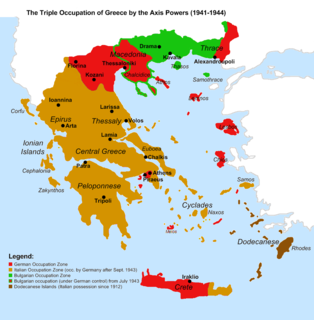 W
WThe occupation of Greece by the Axis Powers began in April 1941 after Nazi Germany invaded Greece to assist its ally, Fascist Italy, which had been at war with Allied Greece since October 1940. Following the conquest of Crete, all of Greece was occupied by June 1941. The occupation in the mainland lasted until Germany and its ally Bulgaria were forced to withdraw under Allied pressure in early October 1944. However, German garrisons remained in control of Crete and some other Aegean islands until after the end of World War II in Europe, surrendering these islands in May and June 1945.
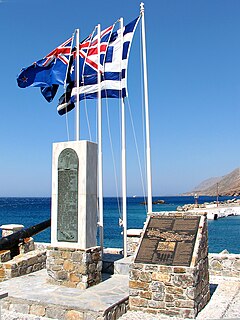 W
WThe military history of Greece during World War II began on 28 October 1940, when the Italian Army invaded from Albania, beginning the Greco-Italian War. The Greek Army was able to halt the invasion temporarily and was able to push the Italians back into Albania. The Greek successes forced Nazi Germany to intervene. The Germans invaded Greece and Yugoslavia on 6 April 1941, and overran both countries within a month, despite British aid to Greece in the form of an expeditionary corps. The conquest of Greece was completed in May with the capture of Crete from the air, although the Fallschirmjäger suffered such extensive casualties in this operation that the Oberkommando der Wehrmacht abandoned large-scale airborne operations for the remainder of the war. The German diversion of resources in the Balkans is also considered by some historians to have delayed the launch of the invasion of the Soviet Union by a critical month, which proved disastrous when the German Army failed to take Moscow.
 W
WThe Greek Resistance is the blanket term for a number of armed and unarmed groups from across the political spectrum that resisted the Axis occupation of Greece in the period 1941–1944, during World War II. It is considered as one of the strongest resistance movements in Nazi-occupied Europe.
 W
WThe Hal Far Fighter Flight was a British fighter unit formed during the Siege of Malta in 1940. For several weeks, the island of Malta was protected by a small force of Gloster Sea Gladiator biplane fighters, based at RAF Hal Far, which was also known as the Fleet Air Arm station HMS Falcon. The flight is the source of the myth that only three aircraft, named Faith, Hope and Charity formed the fighter cover for the island. In fact, six aircraft were operational, though not always at the same time; others were used for spare parts. The names Faith, Hope and Charity were applied to the aircraft many months later, by a Maltese newspaper.
 W
WOperation Herkules was the German code-name given to an abortive plan for the invasion of Malta during the Second World War. Through air and sea landings, the Italians and Germans hoped to eliminate Malta as a British air and naval base and secure an uninterrupted flow of supplies across the Mediterranean Sea to Axis forces in Libya and Egypt.
 W
WThe Lascaris War Rooms are an underground complex of tunnels and chambers in Valletta, Malta that housed the War Headquarters from where the defence of the island was conducted during the Second World War. The rooms were later used by NATO and are now open to the public as a museum.
 W
WThe Levant Schooner Flotilla was an allied naval organization during World War II that facilitated covert and irregular military operations in the Aegean Sea from 1942–1945. It was primarily organized by the British Royal Navy and consisted of a series of commandeered caïques, or local schooners, manned by British sailors, special forces, and Greek volunteers.
 W
WThe SS Ohio was an oil tanker built for the Texas Oil Company. The ship was launched on 20 April 1940 at the Sun Shipbuilding & Drydock Co. in Chester, Pennsylvania. She was requisitioned by the Allied forces to re-supply the island fortress of Malta during the Second World War.
 W
WDuring World War II, Operation Accolade was a planned British amphibious assault on Rhodes and the Dodecanese Islands in the Aegean Sea. Advocated by the British Prime Minister, Winston Churchill, as a follow-up to the capture of Sicily in 1943 from Operation Husky, it was cancelled on 25 December 1943 to focus on the assault on Anzio. The allies did not, then, gain all of the Dodecanese. Most notably, the Germans still had possession of Rhodes. The operation in the Dodecanese, though, kept many German troops occupied in the area.
 W
WPalestine Railways was a government-owned railway company that ran all public railways in the League of Nations mandate territory of Palestine from 1920 until 1948. Its main line linked El Kantara in Egypt with Haifa. Branches served Jaffa, Jerusalem, Acre and the Jezreel Valley.
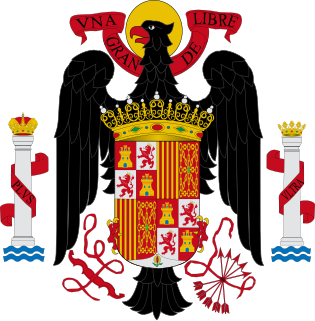 W
WDuring World War II the Spanish State under Francisco Franco espoused neutrality as its official wartime policy. This neutrality wavered at times and "strict neutrality" gave way to "non-belligerence" after the Fall of France in June 1940. Franco wrote to Adolf Hitler offering to join the war on 19 June 1940. Later the same year Franco met with Hitler in Hendaye to discuss Spain's possible accession to the Axis Powers. The meeting went nowhere, but Franco would help the Axis — whose members Italy and Germany had supported him during the Spanish Civil War — in various ways.
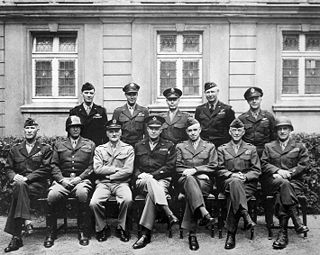 W
WThe European Theater of Operations, United States Army (ETOUSA) was a Theater of Operations responsible for directing United States Army operations throughout the European theatre of World War II, from 1942 to 1945. It commanded Army Ground Forces (AGF), United States Army Air Forces (USAAF), and Army Service Forces (ASF) operations north of Italy and the Mediterranean coast. It was bordered to the south by the North African Theater of Operations, United States Army (NATOUSA), which later became the Mediterranean Theater of Operations, United States Army (MTOUSA).
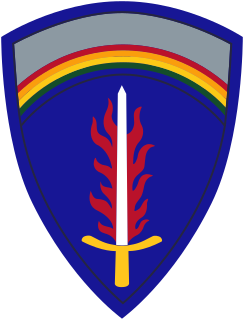 W
WUnited States Army Europe (USAREUR) is an Army Service Component Command (ASCC) /Theater Army responsible for directing United States Army operations throughout the U.S. European Command (EUCOM) Area of Responsibility (AOR). During the Cold War, it supervised ground formations primarily focused upon the Warsaw Pact to the east as part of the North Atlantic Treaty Organisation (NATO)'s Central Army Group (CENTAG). Since 1989, it has greatly reduced its size, dispatched U.S. forces to Southwest Asia, Kosovo, the War on Terrorism and increased security cooperation with other NATO land forces.